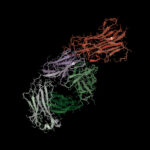
Speakers at a 2013 ACR State-of-the-Art Clinical Symposium, held April 20–21 in Chicago, highlighted treatment advances in the top three areas of concern for many rheumatologists: osteoarthritis (OA), rheumatoid arthritis (RA), and systemic lupus erythematosus (SLE).
Treatment Options for OA
Steven B. Abramson, MD, chair of the division of rheumatology at New York University Hospital for Joint Diseases in New York City, reminded attendees that patients with OA are living with a condition that can lead to depression, interruption of sleep, and fibromyalgia-like regional pain. The numerous pain-relief therapies available are often inadequate or have harmful side effects, he said. Unlike treatment of RA, there are still no disease-modifying agents that slow OA progression and improve symptomatology.
Commonly used analgesics—acetaminophen, nonsteroidal antiinflammatory drugs (NSAIDs), COX-2 inhibitors, topical NSAIDs, intraarticular corticosteroids, intraarticular hyaluronic acid, glucosamine, chondroitin sulphate, and others—have a modest effect on pain. In large population studies or clinical trials, the effect is about 30%, “with the placebo effect in these studies actually exceeding the effect size of pharmacologic treatment,” he said.
Concern about gastrointestinal and cardiovascular events associated with NSAIDs has led to more reliance on opioids, which have a greater effect on pain. Use of opioids in elderly patients, however, comes with risk, he said. A 2010 report found that opioid use in the elderly was associated with increased risk of cardiac events, falls, fractures, and all-cause mortality when compared with NSAIDs.1
A new analgesic under investigation is tanezumab, a humanized monoclonal antibody that binds and inhibits nerve growth factor. A phase II trial demonstrated a significant reduction in joint pain and improvement in function with mild and moderate adverse events among patients with moderate to severe knee OA.2 When the drug was introduced into a larger population in phase II and III trials, however, there was a significant incidence of rapidly progressive OA, characterized by destruction of cartilage and bone, fragments, and necrosis, particularly in patients treated with both tanezumab and an NSAID.
Following those results, the Food and Drug Administration placed a temporary hold on further clinical trials, which has now been lifted. Tanezumab is in phase III trials, with risk-mitigation strategies in place, Dr. Abramson said.
Weight-loss strategies have also been effective, with studies showing that bariatric surgery can significantly reduce OA pain. Dr. Abramson is participating in a prospective study using lap band surgery for patients with a BMI of 31 to 35 and one or more comorbidities (diabetes, hypertension, OA) to assess the effect of the surgery on inflammatory mediators and other symptomatology.

